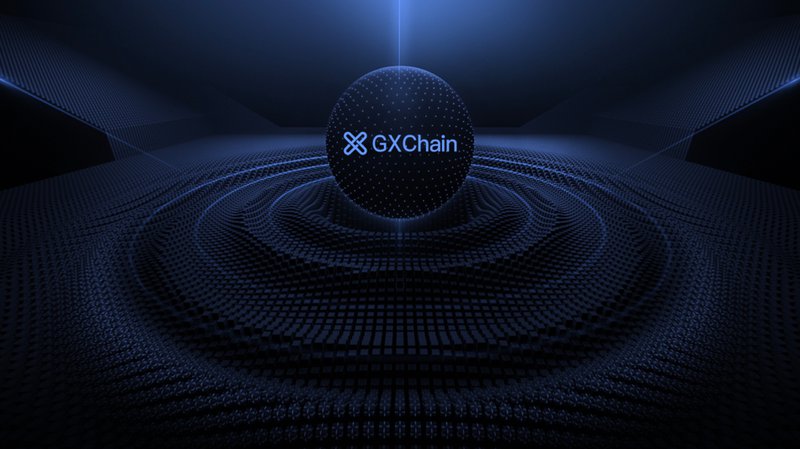[promoted] GXChain and the Blockchain Data Economy

Imagine a new digital economy, one that allows everyday people to
take full control of their personal data. Complete with a public chain for data
transactions and application development, this system would foster a
trustworthy, domain-wide data exchange that capitalizes on the torrent of
advancements taking place through blockchain technology.
A rapidly growing enterprise known as GXChain is on a steady course toward achieving this milestone. Launched
in 2017 and led by a technical team in China, the company has a value proposition
that is predicated on the safe, credible, efficient and free exchange of data
to maximize its use and value.
GXChain offers an effective solution for users to
gain full control, manage and authorize use of their personal data. GXChain champions
all levels of app development and advancements. As opposed to other public
blockchains, the company supports smart contracts, blockchain as a service
(BaaS) and many other unique services including ID verification,
multidimensional data, KYC and rapid login.
A core element supporting this project’s aim is
the GXChain decentralized exchange. This digital marketplace allows for the delivery of peer-to-peer
data transmission without precipitating data, effectively protecting data
privacy and copyrights, in addition to mitigating fraud and other nefarious
activity.
It makes use of a decentralized model to address issues around
trust and data security, while fostering a
supportive system for GXChain traffic, capital, technology, platform
docking and other elements that add commercial value.
“Today, people are losing control over their
data,” said Yunpeng Ding, GXChain’s regional manager for North America. “Many third-party platforms gain huge profits by selling
people’s data or personal information, with no compensation to the data’s real
owner. Also, companies or academics need real, accurate, diversified data to
conduct research. So we here at GXChain are building this data economy
ecosystem to bridge the gap.”
Fueled by Graphene
GXChain’s supportive architecture capitalizes on the advantages of
Graphene, an open source blockchain application built primarily with the
programming language C++, which was originally developed to serve as the
foundation for the decentralized exchange ecosystem Bitshares.
Possessing numerous variations, Graphene has evolved and forked
many times, with the original release managed by the software development
service Cryptonomex. It was created in a modular fashion that allows for
adaptability to many uses.
New Projects Abound
At the time of this writing, over 3,000 projects
have been applied to the GXChain, with nearly 100 more under incubation,
according to the project.
Blockcity, a virtual city built by GXChain, is just one of many examples of projects launched. This
ecosystem, with over a 1,860,000 users, offers a rich set of data resources for
chain applications and partners.
Users can set up their own unique identity in the
city that’s saved and verified on the blockchain. In the future, it will
provide users with many additional features, including the ability to execute
transactions, social engagement and online shopping.
This ecosystem will feature the “Blockcity” DApp,
which provides personal data management and data-sharing tools, allowing for an easy and
convenient way for ordinary people to make use of blockchain technology’s transparency
and efficiency advancements.
The broader aim of Blockcity is to incentivize users
with GXS token rewards to cultivate marketable data if they
choose to share information tags with the community. Users have the ability to
consolidate and store their encrypted data on a distributed file system and can
elect to open their data repository and profit from it.
“Blockcity is just one example of how GXChain is
building a data economy ecosystem that enables our users to access a fair,
secure and transparent data transaction environment,” said Ding.
Validating the Road Map Ahead
In a July report called “Global
Public Blockchain Technology Assessment Index,” the third-ever such report issued by the research institute of the Ministry of Industry and
Information of China (CCID), GXChain was rated fourth out of 31 public chains.
It received high marks on all three factors that the index is based on:
technology, applications and innovation, according to the project.
Underscoring this
validating achievement, GXChain received a better
“technology” score than Lisk, a better “application”
score than EOS and a better “innovation” score than NEO and Stellar combined — all
this despite that fact that GXChain has a modest market
capitalization ranking, the GDAX team reported.
“The rating means GXChain is a
valuable and powerful public blockchain, indicating that GXChain leads in
technology, applicability and innovation among blockchain projects all over the
world,” said Ding. “We hope to build an underlying big-data public chain
ecosystem. Our vision is to build a credit society through blockchain
technology so that people can live more efficient and happier lives.”
Note: Trading and investing in digital assets is speculative and
can be high risk. Based on the shifting business and regulatory environment of
such a new industry, this content should not be considered investment or legal
advice.
This promoted article originally appeared on Bitcoin Magazine.


